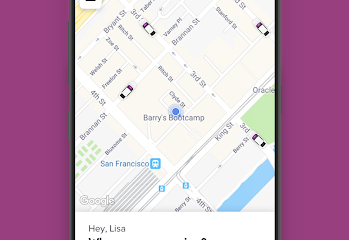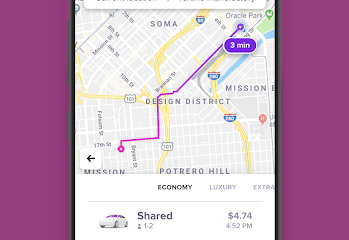Lyft
In times when urban transportation and connectivity have become significant elements of city life, it's worthwhile to understand the impact of ride-sharing apps like Lyft. Launched in 2012, this San Francisco-based company has grown to be a dominant force within the ride-sharing market. Offering a user-friendly interface and prompt, reliable service, Lyft has revolutionized the way we perceive transportation, helping us migrate from traditional forms of transit towards a more sustainable, community-based model. But what exactly does the Lyft app entail, and how does it function? Let's traverse the lanes of this innovative app.
The Navigating Tour of the Lyft App
Lyft operates as a connection bridge between drivers and riders, utilizing an app-based platform for booking rides. Users can book a ride with just a few touches, select from an array of vehicle options, track ride locations, and even share estimated arrival times. The streamlined payment process within the app, multiple ride options depending on the passenger count and comfort preference, and availability in most major cities make it an undeniable staple in the ride-share marketplace.
One key feature is the on-demand ride-hailing capability. Users can simply select their pickup and drop-off locations to request a ride immediately or schedule one for later. The immediate availability of rides across most cities makes ride-hauling a breeze.
The fare estimate feature is particularly handy for those on a budget. Before you book a ride, you can see a fare estimate based on the current rates, ensuring full transparency in pricing. This feature goes hand-in-hand with Lyft's multiple ride options. Depending on the number of passengers, budget, and comfort level, a user can select from Lyft, Shared, Lux, XL, or Black. Each ride type comes with its own price point and advantages, giving users a broad spectrum of choices.
Lyft's app comes with an in-built, real-time GPS tracking system. You can track your driver's location and estimated arrival time in real time once you book a ride. Additionally, you can share your route and estimated arrival time with friends or family, ensuring your safety and letting others know when to expect you.
Launching the app presents users with a clean, interactive map of their local vicinity with visible car icons showing the live location of nearby drivers, providing a visual and intuitive experience. Not only that, but Lyft also offers a feature called "Favorite Places", where frequent users can save their frequently visited destinations like home, work, or a favorite store, for quick accessibility in the future.
Paying for rides is just as convenient, thanks to app-integrated payments. You can add a credit or debit card, link your PayPal account, or even use Apple Pay or Google Wallet in supported regions. The app automatically charges the payment option you have on file when the ride is completed, minimizing physical contact and sparing you from fumbling with cash or cards.
Although Lyft’s primary service is ride-hailing, the app has expanded its feature list to include bike-sharing and scooter-renting in selected regions, indicating its effort to cater to diverse commuting requirements and promote environment-friendly travel options. Lyft's dedication to providing a one-stop solution for local transportation truly comes across in the extensive and thought-out features of its mobile app.
However, like any app or service, Lyft isn't without its flaws. Some users have reported surge pricing during peak hours as an issue. An unexpected hike in the prices when the demand is high can be a deterrent for those budgeting their expenses. Additionally, while Lyft's reach is expanding, it's still not as globally widespread as some competitors, which may limit its usage in non-metro or international locations.
Furthermore, while Lyft does background checks, some passengers express concerns about safety and the quality of drivers. Not all rides match up to expectations, which can lead to varied personal experiences.
User Impressions and Ride Experience
Lyft, with its modernistic approach and app-based convenience, has largely earned positive impressions from its users. It's lauded for replacing the conventional struggles of hailing a cab with a much more convenient option right at our fingertips. Users appreciate the transparent pricing method and the real-time tracking service, which ensures they know exactly when their ride will arrive.
However, the most cherished feature seems to be the friendly drivers. The company’s focus on the local hiring of drivers has created a vibrant community of drivers who are often familiar with their locale, leading to enriching travel experiences for riders.
Pros
- Easy-to-use interface
- Reliable and prompt service
- Variety of ride options
- Transparent pricing mechanism
- Real-time ride tracking
- Friendly and local drivers
Cons
- Limited geographic coverage compared to competitors
- Varied passenger experiences depending on the driver.






















Leave a comment
Your comment is awaiting moderation. We save your draft here
0 Comments